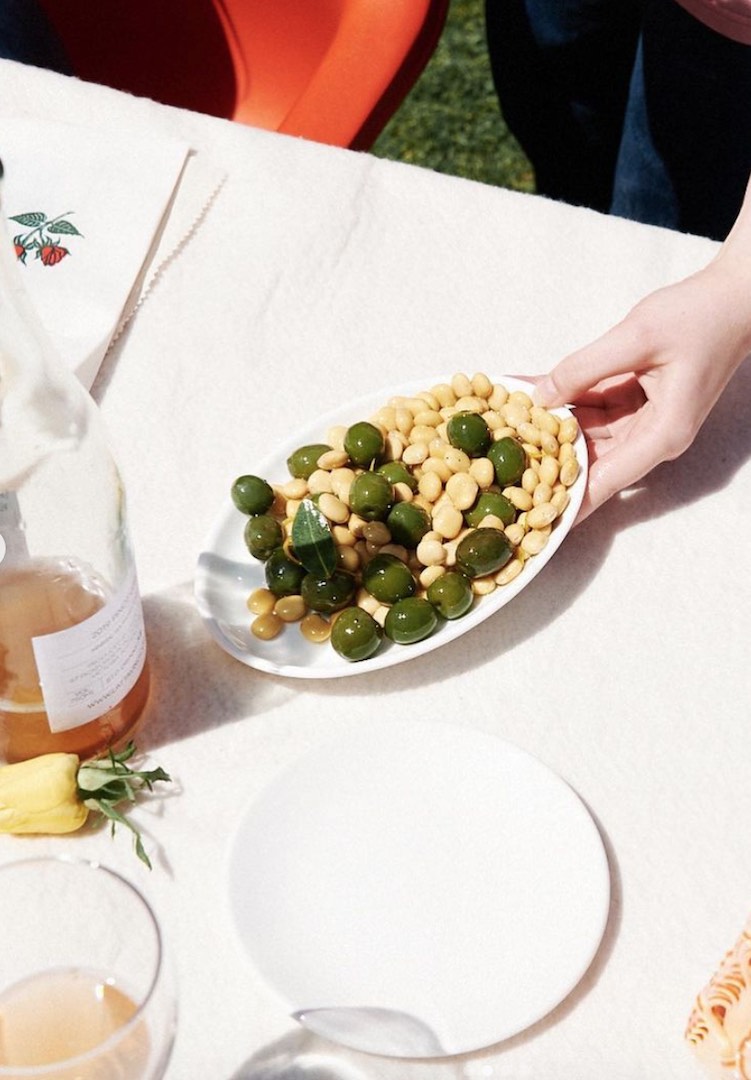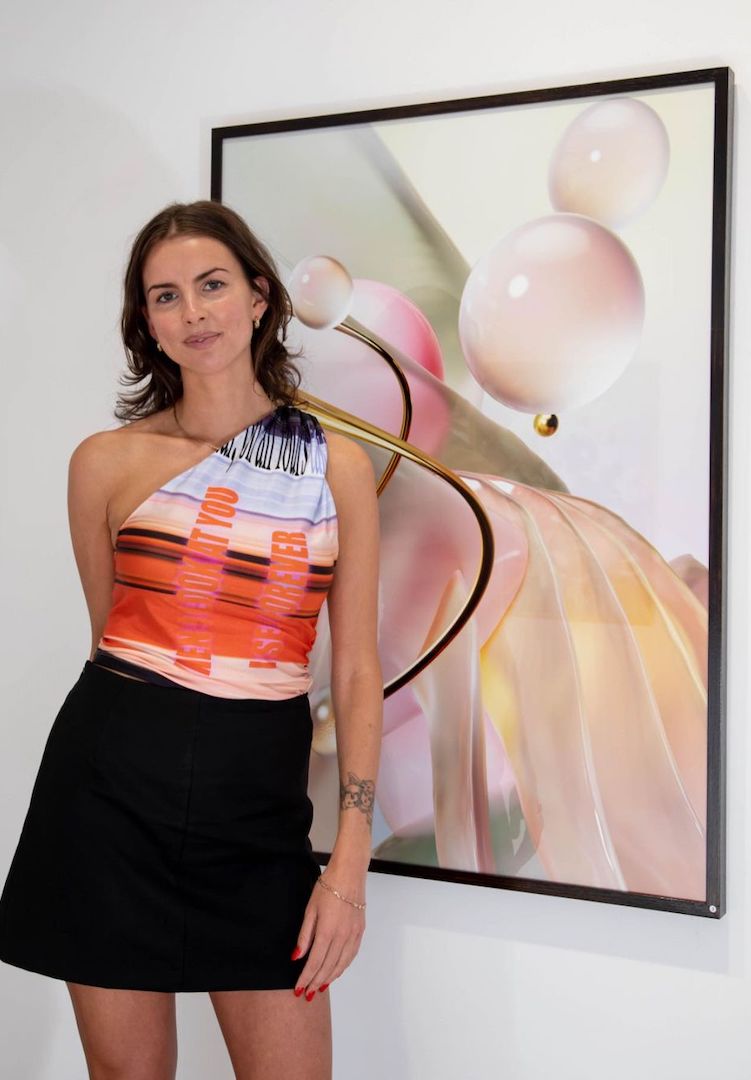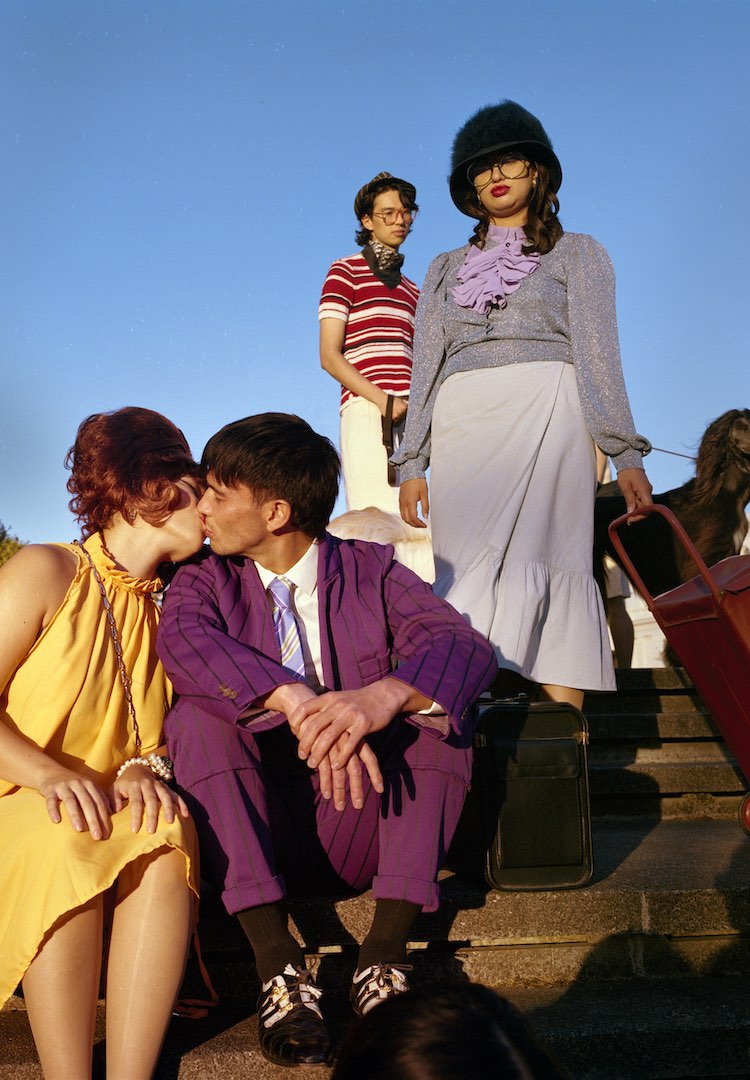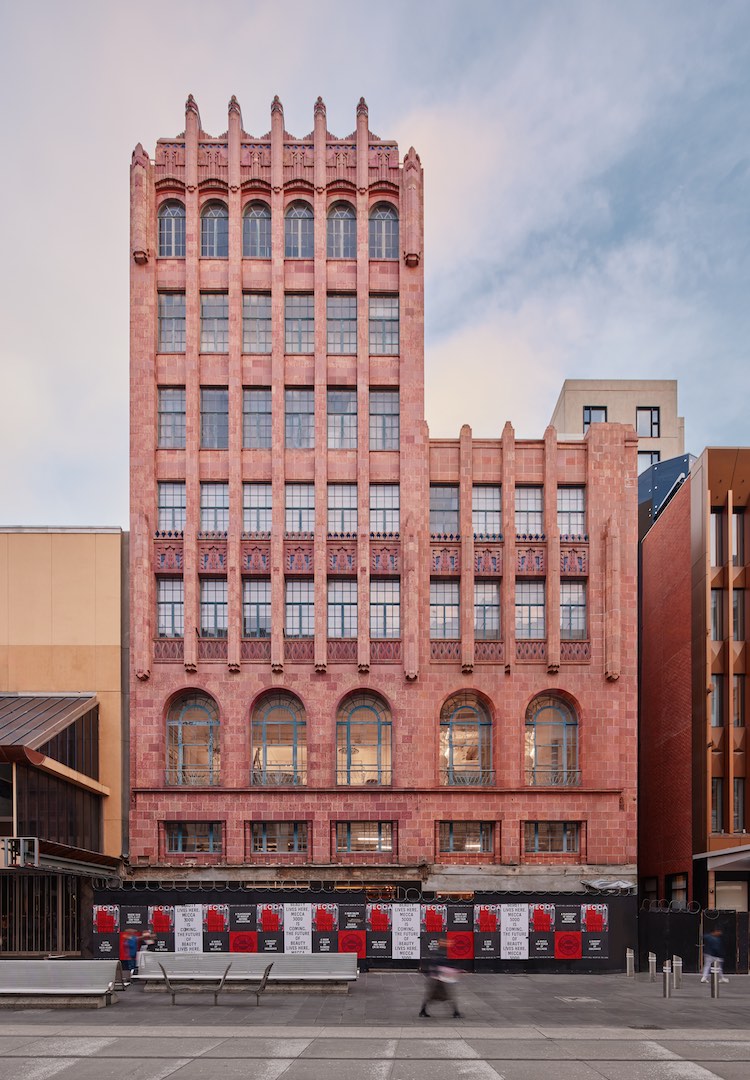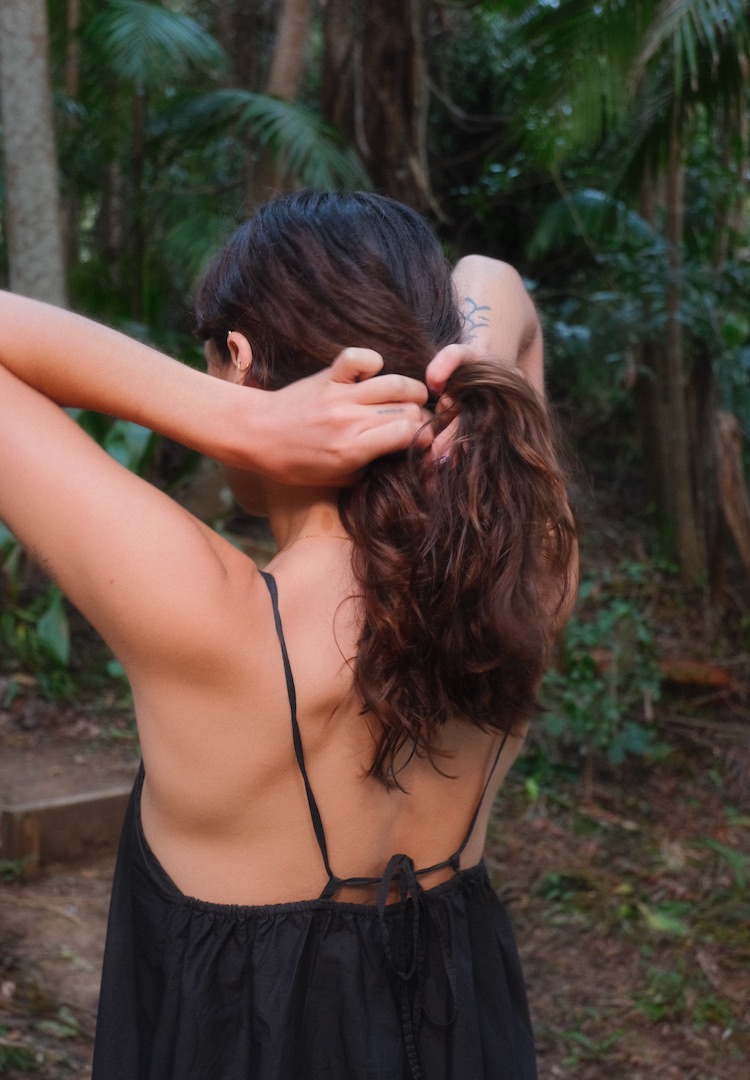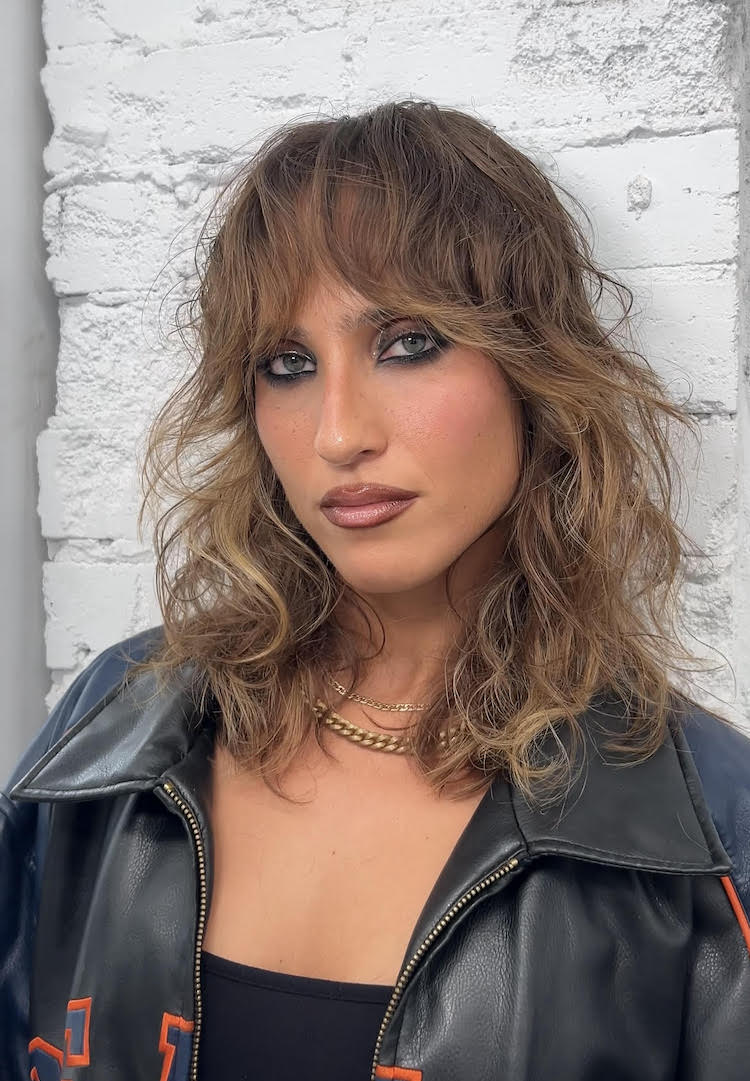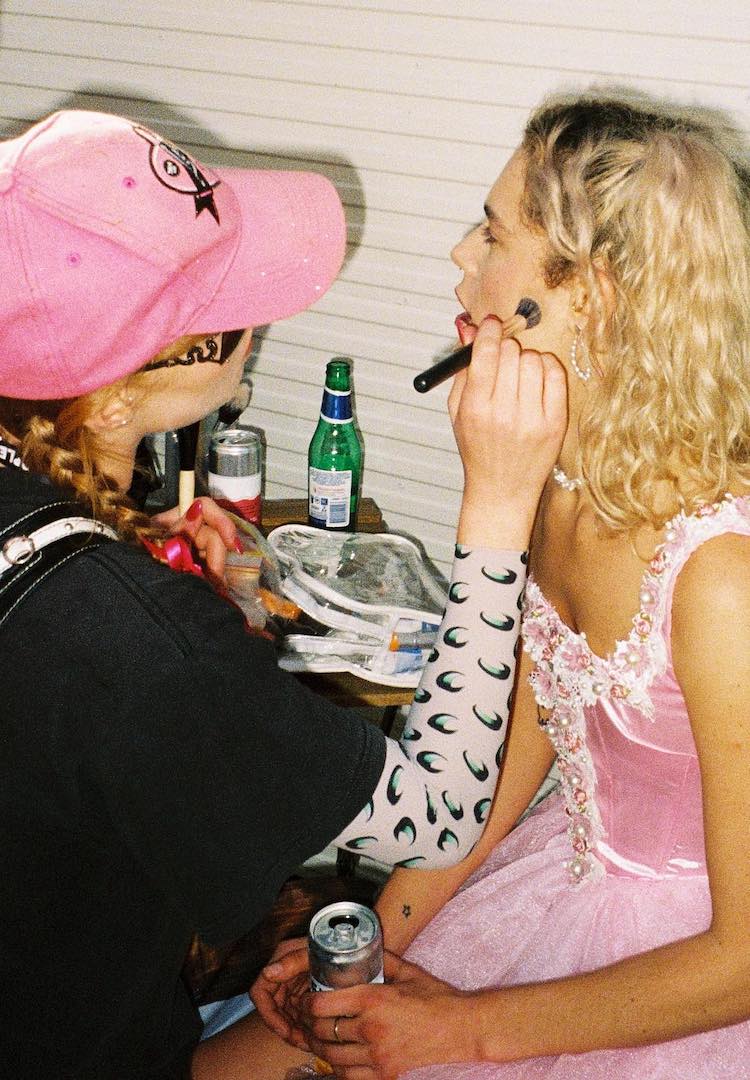How emerging digital artist Mikaela Stafford landed Mecca as a client
IMAGE VIA @mikaelastafford/INSTAGRAM
WORDS BY IZZY WIGHT
“I hope to encourage viewers to consider the macro and microscopic ecosystems that exist within everything. I hope to evoke a sense of familiarity and bizarreness in my work.”
Mikaela Stafford’s art is the kind that causes you to stare at your computer, slack-jawed, as you try to imagine how this magical sherbert-coloured world could have possibly inhabited the grubby screen of your MacBook Air. Blurring the lines between physical and digital, the multidisciplinary artist started her animation journey in Melbourne’s 2020 lockdown.
“I gradually developed an animation style that I would best describe as some kind of ‘biomorphic escapism’,” she explains. As the physical world became smaller, Mikaela’s digital one expanded. With stage design and installation art experience under her belt, she used Youtube tutorials to teach herself the principles of 3D animation, Cinema 4D and Adobe.
For more content like this, tap through to our Life section.
Barely two years on, Mikaela has held multiple solo exhibitions, created visuals for music festivals like Pitch and Hopkins Creek, collaborated with a diverse range of fashion and beauty brands and created the dynamic national Mecca campaign, Future Beautiful. Here’s a little of what she’s learnt along the way.
Tell us about yourself. Have you always been creative?
View this post on Instagram
I’ve always had creative interests; I always knew I wanted to create ‘things’. I’ve worked across a wide range of creative jobs… I initially studied art history because I wanted to be a curator at the time, but eventually grew the confidence to commit to doing my undergrad [Bachelor of Visual Arts (Honours) at Sydney College of the Arts].
Later, I moved to Melbourne to do my Master of Arts (Art in Public Space) at RMIT. Over the last seven years, I’ve done everything from installation art to performance, curation, stage design, project management, sculpture and more. Now, my practice is predominantly digital and 3D motion.
How did you get your start as a digital artist?
Prior to the pandemic, I was working as a freelance stage designer and installation artist. Naturally, once the lockdowns took full effect, I lost all of my freelance work and decided it was time to upskill. With the world on hold (and Jobkeeper payments) I had a unique opportunity to fully immerse myself in 3D motion graphics.
Honestly, if it weren’t for the pandemic I don’t think I would’ve had the time to solely focus on learning and developing animation skills as quickly as I did. If I wasn’t doing it full time while receiving government support there’s no way it would have been possible to transition into doing animation as a freelancer.
The initial plan was to learn 3D animation so I could do spatial mockups for installations and experimental experiential design. But once I started to get my head around the creative capacities of the software, I gradually developed an animation style that I would best describe as some kind of ‘biomorphic escapism’.
In saying that, when I started I didn’t know how to use any digital design programs. It really was about starting from the bottom, which was extremely overwhelming at the time. I spent almost every day of lockdown at my computer relentlessly following Youtube tutorials; trying to teach myself Cinema 4D and Adobe simultaneously. Naturally, this led to a lot of tears of frustration over the keyboard.
It was especially difficult because computer-based design programs don’t come to me very intuitively. Progress was extremely slow at the start, but I was committed to learning how to make it work. I started learning in May 2020, giving myself a deadline of February 2021 to be freelancing full-time as an animator – which is what I did.
It’s only been a year working in the field but it’s been such a great and challenging experience. Looking back, I’m proud of myself for being able to do it under the pressures of isolation. So, tears aside, it’s undoubtedly been one of the best commitments and decisions of my life.
Can you talk us through the process of creating one of your pieces?
View this post on Instagram
Creating 3D environments is quite similar to setting up a photoshoot. You set up your backdrop, position your lighting and camera and start sculpting the objects in front of that. Having a background in installation, lighting, spatial and stage design has definitely informed the way I create virtual scenes – as lighting is one of the most crucial components of 3D animation.
I often like to create scenes where the scale of the environment is quite ambiguous. By creating fictional worlds inside worlds that could exist on macro or micro scales, I hope to encourage viewers to think about the ‘bigger picture’; to consider the macro and microscopic ecosystems that exist within everything. I hope to evoke a sense of familiarity and bizarreness in my work.
Where do you pull the inspiration for your works?
I draw inspiration from everywhere: the natural world, sci-fi movies, costume design, fashion, music and architecture. I find almost anything that has a relationship to light fascinating.
Throughout the many lockdowns animation definitely became an all-encompassing escape, so creating bio-digital environments with different kinds of landscapes, natural formations and creatures became a ‘place’ for my mind to go.
My animations often depict sites that are abundant and thriving, surreal scenes of discovery where technology works symbiotically and harmoniously with the natural world. I like to imagine possible futures, I find this helpful for a nervous mind – especially in times riddled with uncertainty and anxiety.
You recently collaborated with Mecca for its multifaceted Future Beautiful campaign. What’s it like seeing your work in these large-scale, immersive landscapes?
View this post on Instagram
Working on the Mecca campaign was an immensely positive experience. The creative team were extremely trusting of my direction for the project and we shared ideas very freely, which made the execution of the project even more rewarding.
Seeing the artworks span across every shopfront in Australia and New Zealand was a very surreal and validating experience. The 3D animations were then translated into AR, which is something I’d been wanting to experiment with for a long time. Seeing that dimension of the campaign come to life has gotten me very excited about the future and the different ways digital art can be experienced.
How do you want people to interact with your art?
I would like the viewer to feel a sense of wonderment, I hope people feel a sense of possibility. The current state of the world can be immensely devastating and overwhelming at the best of times, I hope my work facilitates a sense of reprieve, curiosity and optimism. Even though my work can be quite dark at times, there’s always an important play with light and fluid motion that I hope resonates with people.
You’ve worked across a wide range of collaborations, how and why?
View this post on Instagram
Working collaboratively is one of my favourite ways to work. In the last year, I’ve experimented with digital fashion, rendered interiors, created music videos, learnt AR, designed wine labels, created visuals for music festivals and collaborated with beauty, ceramics and jewellery brands (plus more).
I don’t want to be ‘boxed in’ as being one type of animator or artist. I’m still in the very early stages of my digital art career and discovering how 3D animation can be adapted across a multitude of contexts.
What’s the best and worst advice you’ve received as an artist?
‘Be more commercial’ was undoubtedly the worst advice I’ve received. When I started my animation journey, I definitely felt pressure to be more ‘palatable’.
I think the advice came from the perspective that commercial success can’t be attained with artworks or designs that are ‘too niche’ or experimental. It’s a sentiment I couldn’t disagree more with.
People are drawn to individuality and I strongly encourage all creatives to pursue their own personal style and expression. Otherwise, you end up feeling indifferent and insecure about what you’re creating.
The best advice was ‘trust yourself’. Over time, I’ve stopped asking for so much guidance – I have a better understanding of what I want to be doing and the direction I want to be heading in. I’ve learnt to trust my judgment in difficult situations.
What’s next for you?
View this post on Instagram
The beauty of being able to 3D model sculptures is it offers a unique sense of hindsight. Bridging the gap between the virtual and physical worlds is important to me. I believe it has the potential to empower individuals and communities to understand the ethics behind new technologies and their impact on nature and society.
Immerse yourself in more of Mikaela’s work here.

